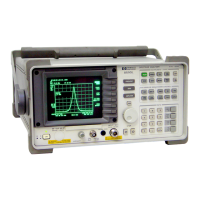Getting Started With Return Loss Return Loss Measurement
Agilent 8163A/B, 8164A/B, and 8166A/B User’s Guide, Fourth Edition 149
Getting Started With Return Loss
What is Return Loss?
When light passes through an optical component most of it travels in
the intended direction, but some light is reflected or scattered. In
many applications these reflections are unwanted, because they can
affect the emission characteristics of any laser in the system. In such
applications, it is important to measure the reflections for the
components of the system.
The reflection factor for a component is a measure of how much light
the component reflects. It is a ratio of the power reflected by the
device to the power incident on the device. More normally we talk
about the return loss of a component. The return loss has units of dB.
Return loss is given by:
What is Insertion Loss?
Light that is absorbed, scattered, or reflected by a component also
affects how much light a component transmits.
The transmission factor for a component is a measure of how much
light the component transmits. It is a ratio of the power transmitted by
the device to the power incident on the device. More normally we talk
about the Insertion Loss of a component. The insertion loss has units
of dB. Insertion Loss is given by:
Return
Loss dB() 10 Reflection
Factor() dB()log–=
Return
Loss dB() 10
Reflected
Power
Incident
Power
-------- -------------------------------------
èø
ç÷
æö
dB()log–=
or
Insertion
Loss dB() 10 Transmission
Factor() dB()log–=
Insertion
Loss dB() 10
Transmitted
Power
Incident
Power
-------- --------------------------------------------
èø
ç÷
æö
dB()log–=
or

